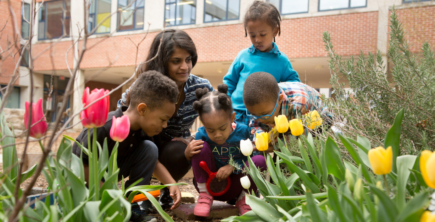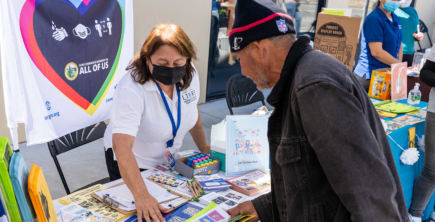
Philanthropy


Alan S. Davis is a Tides Foundation donor partner, Director of the WhyNot Initiative, and President of the Leonard and Sophie Davis Fund.
What brought you to Tides?
I have been with Tides almost from its beginning because I had been doing foundation work with its founder, Drummond Pike. Among many worthwhile sponsoring foundations, Tides is fairly unique in its progressive mandate and leadership, which fertilizes and amplifies my philanthropy.
How has your approach to philanthropy changed in the light of the most recent racial and economic crises?
Our focus has always been on racial and economic justice, so the crisis was simply the catalyst for doubling down.The big change, though, has been our recognition of how important elections are to just about everything we believe in, and elections depend on democratic structures and people power. So we’ve adjusted our grantmaking to reflect that.
What key questions do you ask yourself when making giving decisions?
Every grantmaker should address three fairly complex questions: how to give, where to give, and how much to give.
Why did you start the Crisis Charitable Commitment?
By May of last year, my foundation had responded to the COVID crisis by increasing our payout from its budgeted 8% to 12%. But as I looked around it was clear that only a handful of foundations and wealthy individuals were stepping up to the plate in a meaningful way. I came up with the idea to create a “Charitable Standard” so that foundations, donor–advisors, and ultra-high-net-worth individuals (UHNWI) had a minimum benchmark to determine whether they were giving enough, particularly in a time of crisis. We based the Standard on a number of factors, including the Giving Pledge, wealth tax proposals, and the Emergency Charity Stimulus proposal, all with the goal of doubling the amount of money that goes to support the nonprofit community. The Standard calls for:
We then created a list of donors who met the standard so we could demonstrate that increased giving was not only the responsible thing to do but also the reasonable thing to do. I’m pleased to say that in just 10 months we have more than 90 signatories representing over $3 billion in assets and $550 million in charitable contributions. But we know that is only the tip of the iceberg, so we’re continuing to solicit signers who met the standard in 2020 before launching our 2021 list in a few months.
What’s the #1 piece of advice you would give to our donor community?
No one could say it better than Tides: GOYA—get off your assets. The crisis has not gone away, and will not go away anytime soon, even with government bailouts. The donor community can afford to dig deeper and help bring the nonprofit sector back to life, which includes recovering the nearly one million jobs that have been lost. And perhaps most importantly, the donor community can support efforts that protect our democracy. Hey, baseball is returning, so why don’t we funders likewise all step up to the plate NOW.

Philanthropy

Just Health Fund

Philanthropy

Read the stories and hear the voices of social change leaders fighting for justice.